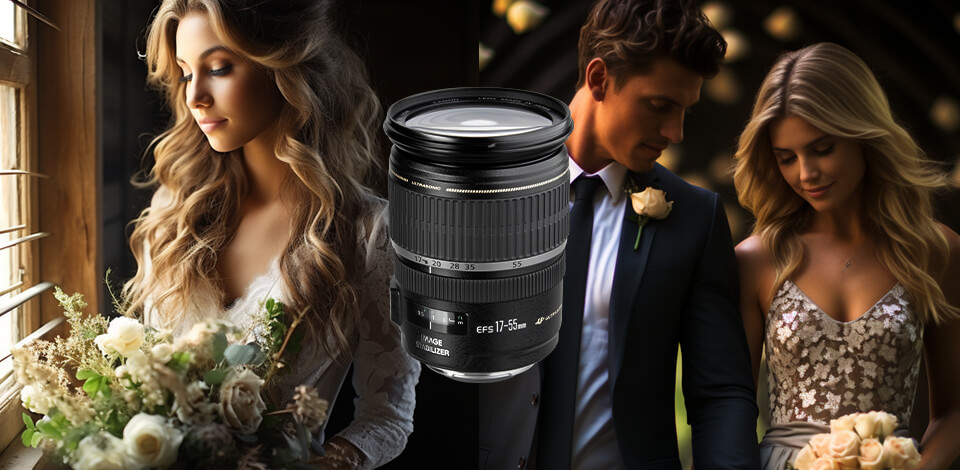
When choosing a Canon wedding lens, pay attention primarily to the optic characteristics of the lens and the technical capabilities of your camera body. Any DSLR body with almost any lens gives a nice picture in good lighting. But the main problems are frequent changes of location.
The main challenge is the excessive sharpness of the background. To make the picture look beautiful and professional, you need to blur the background. All Canon lenses for wedding photography are represented by the L-series of zoom models that provide the necessary aperture range, have a fixed focal length, and offer superior brightness.
To cover all the wedding scenes, each wedding photographer must have different types of lenses in his arsenal.
Photography prime lenses. This is the best option if you’re interested in getting the best lens for portrait shots. The focal length of such lenses is fixed and you wouldn’t be able to stand still, you’ll have to walk around the subject to get the best shot.
A low aperture of prime lenses makes the shallow depth of field. It means you soften your bride and groom's skin and make the couple pop off the page.
Wide angle lenses. The wide angle lens is primarily designed for capturing large outdoor scenes that feature the newlywed couple in the center of the shot. You may use it for indoor shooting, as well as for large group shots. But make sure that you do not have distortions that are very typical for this type of lens.
Telephoto lenses. This telephoto lens for Canon can “move” you closer to the object in case you are far away and blur the background perfectly, similarly to what a bokeh lens does.
Telephoto lenses really help to take natural emotions of people staying invisible and far away from them. Be careful, as you need to use a fast shutter speed or a tripod for these shots.
Classic zoom lenses. The main advantage of these lenses is that you don't need to constantly move while shooting to get closer to the subject. Another noteworthy perk is the boosted shooting speed. You’ll be able to quickly go from taking photos at 17mm to 55mm without having to waste time by replacing one lens with another and potentially missing a perfect shot while doing so.
Macro lenses. They allow you to find the beauty of an event in the little things such as décor, flowers, cakes, etc. Macro lenses are also popular for shooting newborns, so purchasing such a model is a must-have for wedding photographers.
The choice of the Canon lenses for wedding photography greatly depends on the photographer in question and creative goals. However, for this review, I’ve put together such a diverse array of lenses that everyone is bound to find an option to their liking while basing my selection on my past wedding photoshoots.
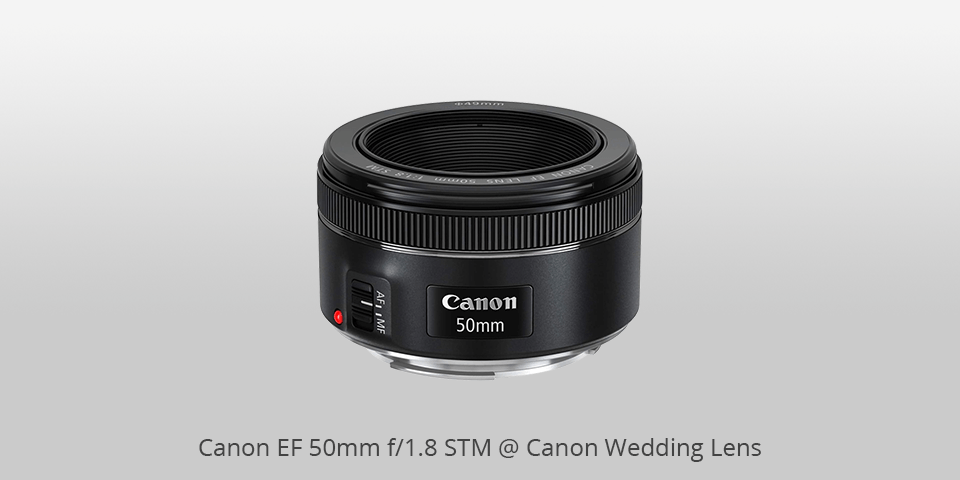
Canon EF 50mm f/1.8 STM is a widely-used 50mm lens that is known for its compact, lightweight build and amazing picture quality. Even with a fully open aperture, the image impresses us with its sharpness and the absence of flares.

Photo made by Canon EF 50mm f/1.8 STM
The quality of the optics used for this Canon lens for weddings allows you to enjoy virtually non-existent geometric aberrations (straight lines often appear curved when using an 18-55mm), fantastic results in low-light conditions, and a shallow depth of field (that helps blur the background to ensure the foreground is emphasized as much as possible).
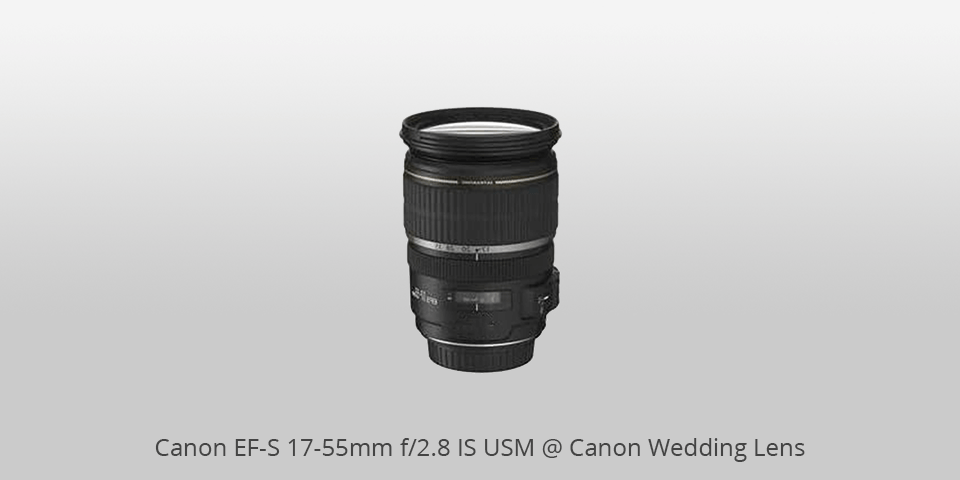
Choose Canon EF-S 17-55mm f/2.8 IS USM Canon wedding lens if you like beautiful blur effects or want to take creative shots. The aperture consists of 7 blades, which results in accurate bokeh. The background is blurred in a soft and nice manner.
Photo made by Canon EF-S 17-55mm f/2.8 IS USM
This bokeh lens is packed with fantastic optics that include AD and aspherical components to help you take sharp photos through the entire zoom range to 55mm. Meanwhile, its 1:3 focus ratio allows the lens to create appealing bokeh blur even when working in subpar lighting.
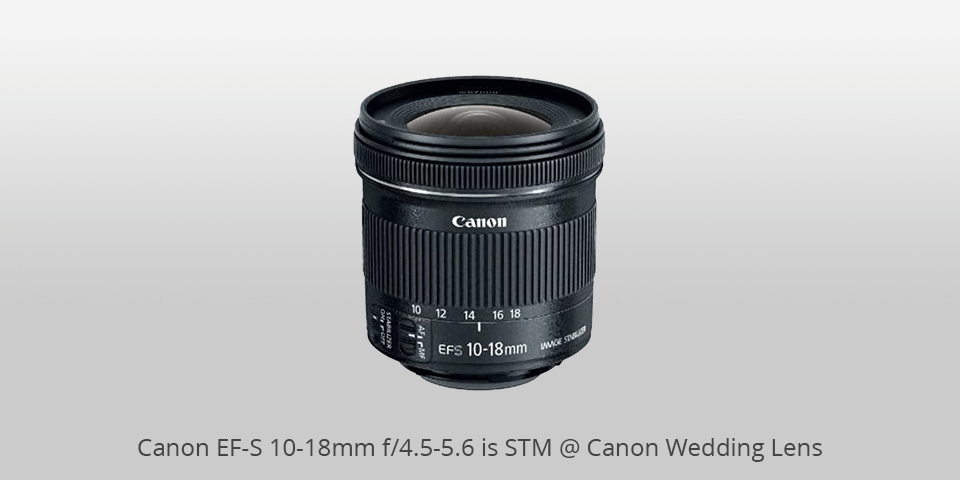
Canon EF-S 10-18mm f/4.5-5.6 is STM is known for its awesome optics and outstanding performance. You get an extra-wide angle of view in a small, portable body that is perfectly paired with EOS cameras.
It contains a 4 group optical zoom system, an aspherical lens element, a large-diameter element, enhanced lens coatings, and a UD lens element. As a result, you can take high-contrast, high-res photos with minimized glare and aberration.

Photo made by Canon EF-S 10-18mm f/4.5-5.6 is STM
Also, this wide angle lens has an Optical Image Stabilizer system to ensure up to 4 equivalent stops of shake correction. Smooth and continuous AF during video capturing is provided by an improved focus mechanism and a stepping motor STM.
A fast CPU, an excellent AF algorithm and a rear focusing system contribute to high-speed AF. Moreover, you can make some adjustments through the full-time manual focus mode.
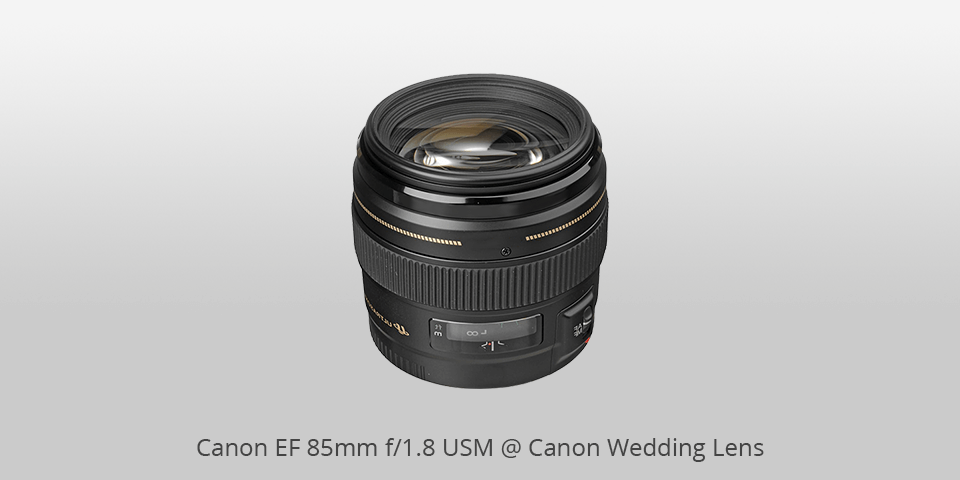
This wedding lens especially stands out for its high aperture and, at the same time, affordable price. This 85mm lens is light enough, compact, rapid, very fast, and even full-framed. You can use this lens both for portrait and wedding photography with equal success.

Photo made by Canon EF 85mm f/1.8 USM
You can shoot everything only with 24-70, which will be enough for some photographers. When paired with Canon cameras it gives a high-quality picture, but the main drawback is the absence of the delightful bokeh, which appears if you shoot with the prime lenses.
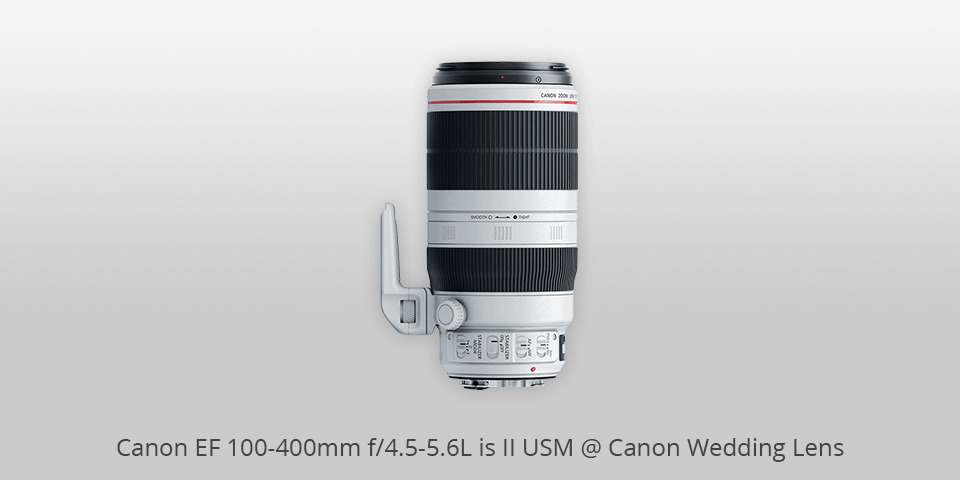
The main features of this wedding Canon lens are a compact size and comfortable ergonomics. At the moment, it is the only brand 100 mm autofocus lens with such a large aperture. That’s why this is the perfect option if you want to take clear, focused photos of all the dances and dynamic events that occur at the wedding.

Photo made by Canon EF 100-400mm f/4.5-5.6L is II USM
Moreover, the lens has no Hard stop – when it reaches the extreme positions, the movement becomes a bit tight for a second. It signalizes that we are at the end point, after that it just spins further.
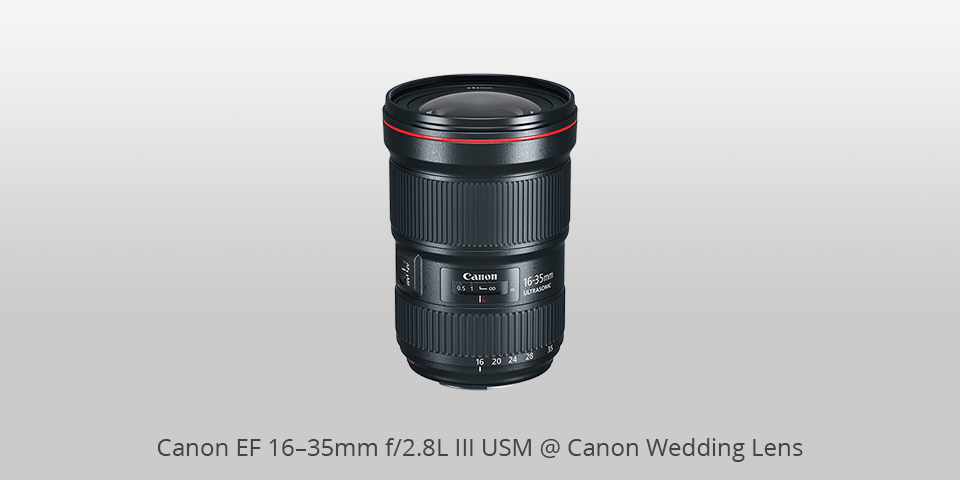
Canon EF 16–35mm f/2.8L III USM offers excellent sharpness, which is crucial for capturing those beautiful wedding moments. It also comes with good weather sealing, so you don't have to worry about shooting in less-than-ideal conditions.
It's part of Canon's L-series, which means it's built with high-quality materials and construction.
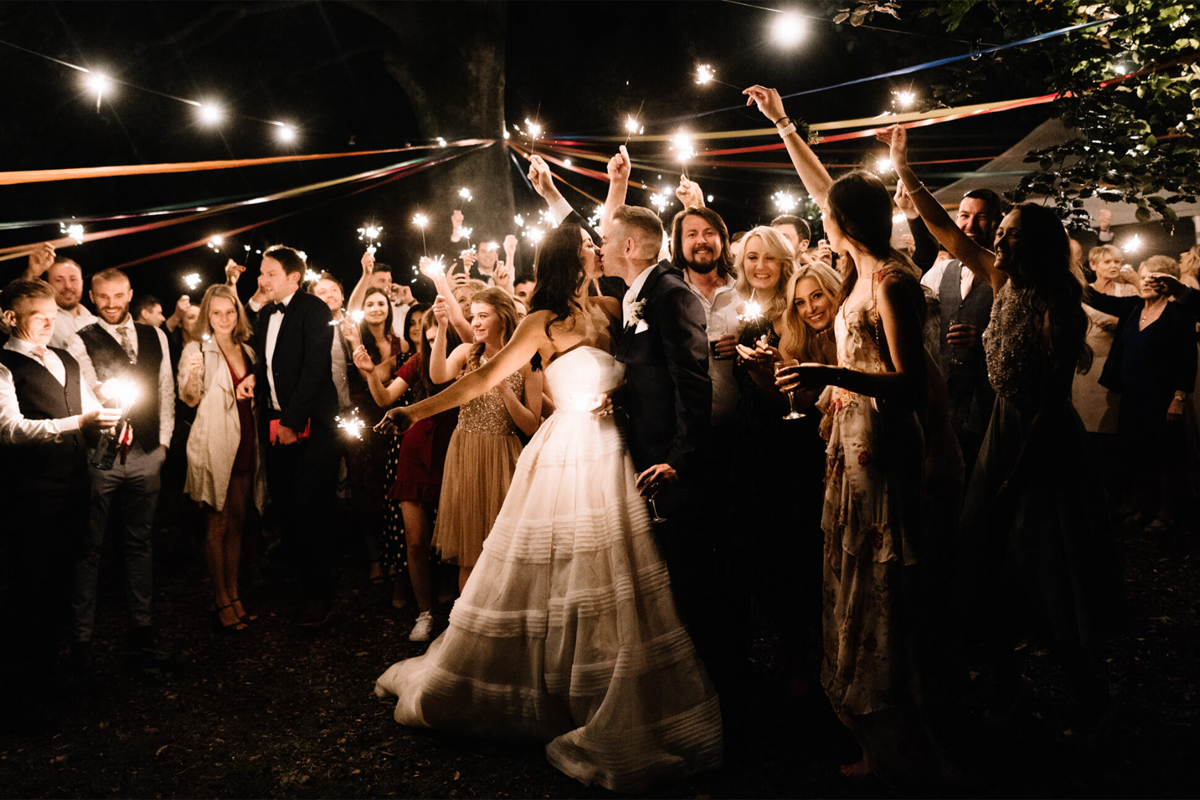
Photo made by Canon EF 16–35mm f/2.8L III USM
The lens feels solid in your hand and has a smooth action for both the zoom and focus rings. The autofocus is quick and quiet, making it suitable for shooting video as well as stills. One notable aspect of this lens is the Subwavelength and Air Sphere Coating, which helps reduce flare and ghosting in low-light conditions.
When comparing the 35mm vs 50mm, the Canon EF 16–35mm f/2.8L III USM offers versatility with its wide focal range, allowing you to capture both wide-angle shots and close-ups.

Canon EF 70-200mm f/2.8L IS III USM wedding lens, one of the best 70-200mm lenses, delivers incredibly sharp results throughout the entire focal length range, especially at f/2.8. It's like a sniper rifle for capturing those precious moments like the kiss, the ring exchange, or the bouquet toss without disturbing your subjects.

Photo made by Canon EF 70-200mm f/2.8L is III USM
One of the most obvious advantages of this Canon lenses for weddings, is its fantastic zoom capability. The lens can be used for a wide range of photographic applications, from weddings to portraits, candid shots, and even some macro photography.
Plus, its large f/2.8 aperture ensures excellent low light performance, which is crucial for wedding photographers who often shoot in dim conditions.
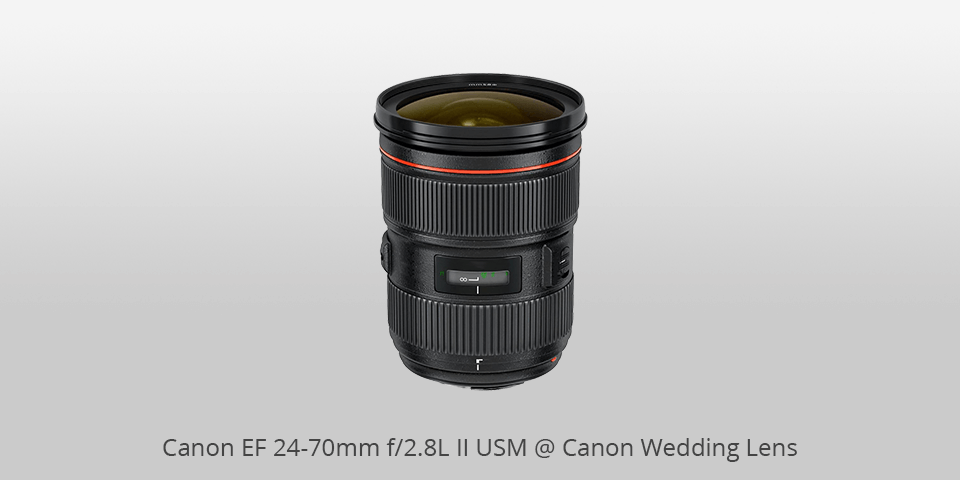
This Canon lens for wedding photography has high-aperture performance. This is a very versatile and high-quality lens in every sense that is suitable for taking wedding photos from a variety of angles and in different conditions.
The first thing I am pleased with is the color rendition; the colors are smooth and deep.

Photo made by Canon EF 24-70mm f/2.8L II USM
This model is rightfully considered the best wedding lens Canon product in terms of picture quality and autofocus speed/precision. It offers terrific sharpness, unparalleled full-frame contrast even at f/2.8, and is made of top-quality components.
| IMAGE | NAME | FEATURES | |
|---|---|---|---|

|
Canon EF 50mm f/1.8 STM
OUR CHOICE
|
CHECK PRICE → | |

|
Canon EF-S 17-55mm f/2.8 IS USM
FOR PORTRAITS
|
CHECK PRICE → | |

|
Canon EF-S 10-18mm f/4.5-5.6 is STM
WIDE ANGLE
|
CHECK PRICE → |
It’s important to have the right lens in your camera kit, especially for wedding photography. When it comes to picking up lens for wedding photography, there are a few key things to consider.

Focal length - different. It determines how much of a scene your camera captures, making it an important factor when choosing wedding lens. For group photos and larger scenes, a wide-angle lens is usually the way to go.
For more detailed portraits, a Canon standard zoom lens is ideal for capturing those intimate moments. The best Canon wedding lenses offer a range of focal lengths to cover all your photo opportunities and ensure you capture every special moment.

Aperture – minimum f/1.4. This refers to how wide the lens can open, allowing more light to enter. A wider aperture, like f/1.4 or wider, is great for low light conditions often encountered during weddings, and it also helps in creating a beautiful blurry background for those dreamy shots.
It's especially handy for capturing wedding details in dim lighting, so keep this in mind when choosing the perfect Canon lens for wedding photography.

Weight - comfortable. You'll want a lens that's lightweight and comfortable to use, especially since wedding shoots can be long and physically demanding. So, make sure to take into account the weight of the lens when making your decision.
For portraits, you'll want a lens that provides a natural perspective similar to what the human eye sees. Prime lenses with a wide aperture of f/2 or f/4 are ideal for blurring the background and making the subject stand out. A 50mm lens on a full frame camera is also a flattering focal length without any lens distortion. It works well for capturing details during the getting ready process or large group photos when you have a second shooter.
For group photos, a wide-angle lens is preferred as it allows you to accommodate more people in the frame. However, be cautious with ultra-wide angle lenses for Canon as they can cause distortion at the edges of the image. A standard zoom lens is also a good choice as it covers a range of focal lengths, allowing you to zoom in on subjects without changing the lens. Opting for a lens with a large maximum aperture will provide a shallow depth of field and create beautiful background blur, especially in low light conditions.
Reception photos are an important part of capturing the bride and groom's special moments. When photographing receptions, you have more flexibility in choosing the focal length. You can experiment with different lenses based on the desired effect. However, it's still recommended to have a versatile lens that can cover a range of focal lengths to capture the atmosphere and details of the reception.